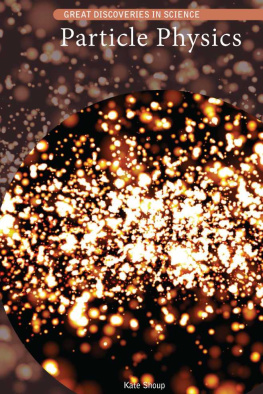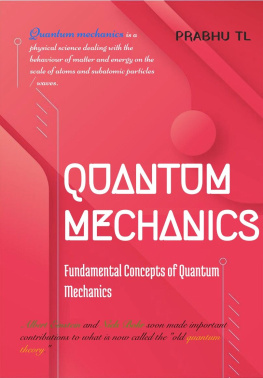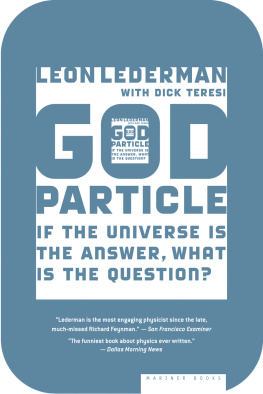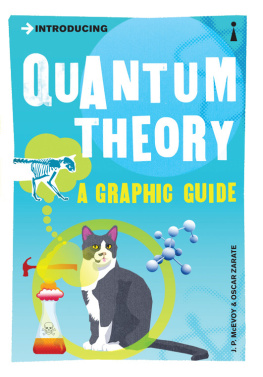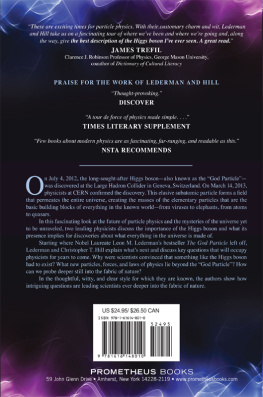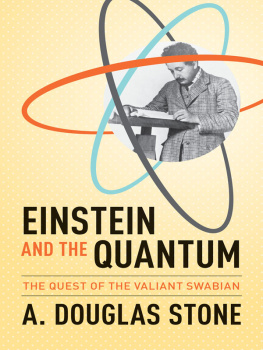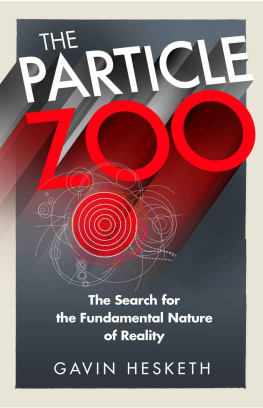Deep Down Things
DEEP
DOWN
THINGS
The Breathtaking Beauty
of Particle Physics
BRUCE A. SCHUMM

2004 The Johns Hopkins University Press
All rights reserved. Published 2004
Printed in the United States of America on acid-free paper
2 4 6 8 9 7 5 3 1
The Johns Hopkins University Press
2715 North Charles Street
Baltimore, Maryland 21218-4363
www.press.jhu.edu
Library of Congress Cataloging-in-Publication Data
Schumm, Bruce A., 1958
Deep down things : the breathtaking beauty of particle physics / Bruce A. Schumm.
p. cm.
Includes bibiliographical references and index.
ISBN 0-8018-7971-X (hardcover : acid-free paper)
1. Particles (Nuclear physics) 2. Quantum field theory 3. Gauge fields (Physics) 4. Symmetry (Physics) I. Title.
QC793.2.S35 2004
539.72dc22
2004050710
A catalog record for this book is available from the British Library.
Illustrations (except for on p. 90) are by Bill Rowe.
And for all this, nature is never spent;
There lives the dearest freshness deep down things
Gerard Manley Hopkins, Gods Grandeur
Contents
Preface
I didnt come up with the title for this book. For that, I can thank the people at the Johns Hopkins University Press, and in particular, Trevor Lipscombe, with whom I worked quite closely at various stages as the book came together. But this I will say: the title does about as good a job of capturing the essence of particle physics as any string of three monosyllabic words possibly can. Deep down within the atomic nucleus, deeply within the paradoxical richness of empty space, deep inside the synapses of the great scientific thinkers of the twentieth centurythis is the territory of particle physics. The connection to the devotional poetry of Gerard Manley Hopkins is also well made; whether one is religious or not, to appreciate particle physics is to appreciate the miracle of nature. In fact, my only reservation about the title is that, as you will shortly see, it implies a degree of literacy to which I cant lay claim.
It will come as no surprise to anyone if I admit that writing a book is a massive and perhaps ill-advised undertaking. In this case, publication will have taken place more than four years since the time when, full of myself after having gotten tenure at the University of California, Santa Cruz, I first sat down to compose an explication of the Standard Model of particle physics for anyone interested enough to make a go of it. The students that gave me the first encouraging feedback on the early chapter drafts have long since moved on, pursuing advanced degrees, and I hope raising the intellectual Cain that we tried to train them to. For my part, when I think of all the late-night television I missed it almost makes me want to cry. But I guess thats all water under the bridge now.
In any regard, one doesnt emerge from a process such as this without favors to return, and it seems to be standard practice to put a few hasty acknowledgments at the front of the book and hope they stand as fair recompense.
First and foremost, I thank Trevor, fellow physicist and editor-in-chief at the Hopkins Press, whom I now consider, along with my seventh-grade and college-freshman English teachers, to be one of the three most effective writing instructors I have had. I also need to thank Trevor for letting me write the book the way I wanted to; for his wealth of clear and well-motivated suggestions, and for not being heavy-handed about them. In this vein, I also need to thank my astronomy colleague Stephen Thorsett for pointing me toward Trevor and the Hopkins Press.
I need to thank my good friend Bill Rowe, whose talent for illustration so ideally complements the content and tone of the book. Perhaps Bill and I will find another excuse to collaborate at some point in the future.
Debts of gratitude are owed to my physics department colleague Michael Riordan, himself a successful writer, and John Wilkes of our renowned science communication program. Their advice was invaluable as I negotiated my way through the unfamiliar world of publishers and literary agents.
And then theres the small army of theoreticians on whom I relied to get my thinking straight for me. Each of the following took time out to read a chapter of the book, confirming my conceptions and politely disabusing me of my misconceptions, playing out my scheme to avoid exposing the large and embarrassing gaps that tend to mottle experimentalists understanding of their own work. From the Stanford Linear Accelerator Center: Tom Rizzo and Lance Dixon (JoAnne, you had your chance!). From the UCSC physics department: Michael Dine, Howie Haber, and Tom Banks. Thanks also to UCSCs Joel Primack for his bibliography of accessible books on cosmology. And I need to throw in another scientist: my mother (Margot Schumm, retired chemistry professor at Montgomery College in Montgomery County, Maryland), who gave me some particularly helpful comments on , as well as one-half of the gift of life (for the other half, I need to thank my father, Richard Schumm, also a retired chemist).
And lastly, I need to thank you, the reader, for choosing to take this book on, rather than joining me in my quest to update my background in contemporary television programing. From my perspective, your abstinence will be well rewarded, for you are on the verge of a noble journey. Like Ulysses slog through the perilous adventures of the Odyssey, the going may not be easy, but persistence will be rewarded. Honestly, I wish you the very best. Bon voyage!
Deep Down Things
1
Introduction
Within the past century, our understanding of the natural world has taken such a vast step forward that, looking back, the state of our scientific knowledge one hundred years ago seems almost laughably naive. Today, as we probe deeper and deeper into the workings of the universe, the responsibility for digging out the most fundamental and overarching of its operating principles has fallen, by and large, to a group of scientists known collectively as particle physicists. This is a book about the Standard Model of particle physicsthe view of the natural world put forth by this community after a remarkable period of development stretching back fifty years or so.
As inhabitants of an astonishingly fertile island in the otherwise inhospitable reaches of interstellar space, we have developed a common-sense view of our world that is shaped by the microcosm in which we live. The laws of this world are known to everyone: find shelter from the elements; develop a livelihood that will enable easy access to food, to a means of transportation, and to whatever creature comforts might be available; and conduct life in a way that will allow others to do the same. These are the sorts of things that we need to know to make do in our corner of the universe.
Over the last few centuries, though, we have invented tools that allow us to extend our senses into previously unimaginable realms, and as a result, we have been forced to reformulate our conception of the rules that govern the physical world. The deeper we look, the more we find that our refined descriptions diverge from our original intuitive notions of natural law, and the more parochial those original notions seem.
The human body, we find, is not really a single object unto itself but rather an uncountable collection of individual and specialized cells, each almost with a life of its own, cooperating in comprehensible ways to enable the bodily functions that sustain life. Looking more deeply, we find that cells are composed of molecules, and those molecules are composed of atoms. As we attempt to understand and codify the rules of existence at this level, we enter the realm of quantum mechanics, with its jarring metaphysical implications.
Next page

